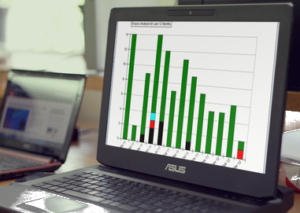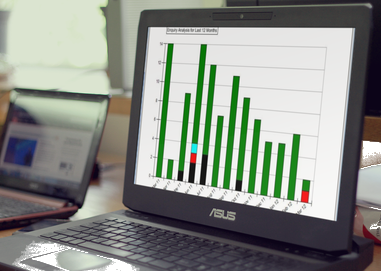 If you are manufacturing business, you will be familiar with the old adage, “you can’t manage what you don’t measure.” Specifically, if you are the owner of a job shop or a contract manufacturing facility, it is important to understand the current state of your business through the use of real time key performance indicators or KPIs in your manufacturing software.
If you are manufacturing business, you will be familiar with the old adage, “you can’t manage what you don’t measure.” Specifically, if you are the owner of a job shop or a contract manufacturing facility, it is important to understand the current state of your business through the use of real time key performance indicators or KPIs in your manufacturing software.
The challenge for manufacturers is understanding what to measure, then setting a goal or standard metric by which your current state is measured against also known as benchmarking and then putting corrective actions into place to help you achieve or surpass these goals in a regular, sustainable fashion.
What to measure?
Key performance indicators should be uniquely personal to your business. However, for most small and mid-sized manufacturers there are the obvious indicators which EVERY manufacturer should consistently measure at least on a monthly (or even weekly) basis. These indicators should represent a cross-section of your business focusing on the key elements of customers, productivity, vendors/suppliers, and financial.
For example, when a business establishes their customer indicators, these indicators should focus on:
- quote backlog
- quote win rate
- order backlog in weeks or pounds
- new orders placed this week/month
- on-time performance
When the business establishes productivity metrics
- these indicators should focus on utilisation by work centre or department
- efficiency by work centre or department
- throughput in days both from a production standpoint (lead days from first time entry to first shipment)
- administrative throughput (lead days from order date to first shipment)
- overbooked or underbooked work centers
- rework hours, scrap cost
- direct vs. indirect hours.
For vendor metrics, the shop should establish metrics for vendor on time performance, average lead time by vendor, acceptance rate by vendor, and valuation of stock and inventory.
Finally, key financial indicators should focus on customer and vendor aging, past due invoices, average days to pay (customers and vendors), and current cash position.
How to measure?
Now that you have established what you need to measure, you will want to spend time evaluating on how to measure.
If you are like most small companies you should quickly come to the conclusion that without some level of manufacturing software system to capture the data in real time, there will be significant manual efforts required to get the data that support the compilation of these metrics.
As a result, you will want to evaluate ways to acquire this data in real time through an automated means that is tightly integrated with your ERP solution.
Make KPIs visible in your manufacturing software
Establishing key performance indicators is critical for driving continuous improvement in your manufacturing business. Every shop employee should be aware of how the shop is performing against these key indicators and be rewarded for their level of contribution in meeting or exceeding these goals.
The data should be posted on a shop bulletin board or better yet, through the use of real-time data on monitors posted in strategic locations throughout the shop. The data should be presented in such a way that is easy to understand (pie charts, graphs, etc. are the best), is timely, and illustrates the overall trend of the company. Finally, these results should be used by key managers to drive decision making and improvements from the shop floor to the top floor.
Today’s business environment has dictated a change in owner and manager mindset. You can no longer afford to run your business without proper system or based on one person’s gut or intuition. The stakes are too critical and the implications are too monumental. Every manufacturing should embrace the continuous improvement cycle of measuring what’s important for the business, establishing metrics and benchmarking against those metrics, and rewarding employee behaviour that directly impacts the accomplishment of those metrics. Only then, can you expect to grow your shop to the next level.
If you are looking to for manufacturing software then download our essential guide to help in your selection – are you ready for a production control system?
[button link=”/ready-production-control-system/” size=”medium” target=”_blank” color=”orange” lightbox=”false”]Download the Guide[/button]

